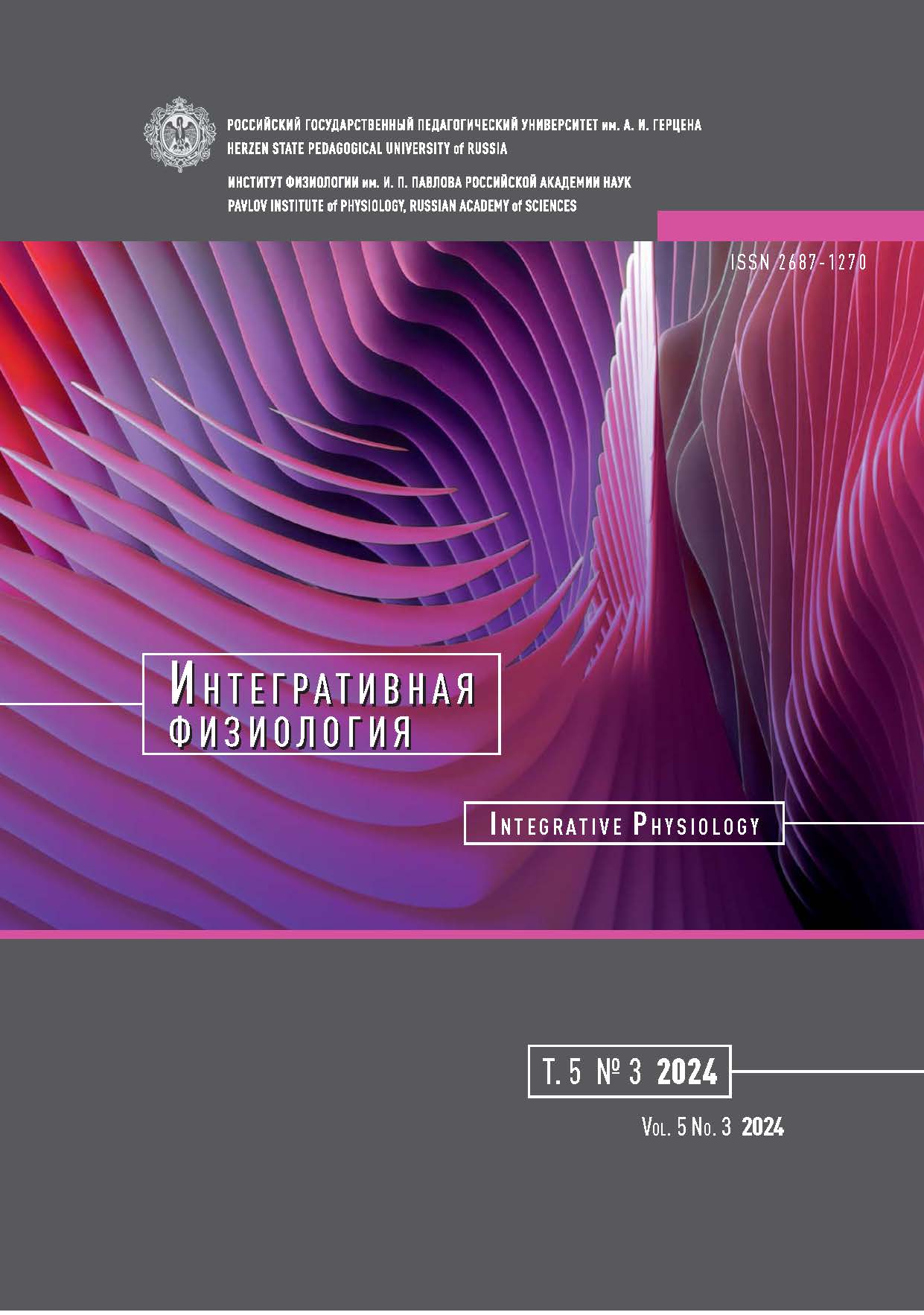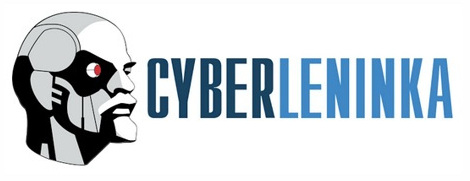Малые белки теплового шока способны защитить клетки млекопитающих от кофилинопатии
DOI:
https://doi.org/10.33910/2687-1270-2024-5-3-294-306Ключевые слова:
нейродегенеративные заболевания, цитоскелет клеток, ADF/кофилины, малый белок теплового шока, докинг белка в белок, шаперонная функцияАннотация
Регуляция динамики актинового цитоскелета играет фундаментальную роль в жизнедеятельности клетки. К группе актин-связывающих белков относится семейство актин-деполимеризующий фактор (ADF) / кофилины. Взаимодействие цитоскелета клеток нервной ткани с белками — представителями семейства ADF/кофилинов может приводить к развитию нейродегенеративных заболеваний. Для млекопитающих характерна экспрессия трех форм ADF/кофилинов: дестрин, кофилин-1 и кофилин-2. В то же время при стрессорных воздействиях в клетках млекопитающих экспрессируются малые белки теплового шока мБТШ27, для которых характерна широкая специфичность к белкам-мишеням. В предположении, что белок мБТШ27 способен связывать ряд ADF/кофилинов, с использованием программы ClusPro 2.0 был проведен докинг этих трех белков ADF/кофилинов в 24-мерный белковый комплекс мБТШ27. Показано, что сильнее всего с мБТШ27 связывается кофилин-1, затем дестрин и слабее всего — кофилин-2. При этом реконструкция F-актина — основного белка цитоскелета, ответственного за увеличение количества и размеров дендритных шипиков, а также синаптическую пластичность, модулируется именно кофилином-1. Таким образом, мБТШ27 способен осуществлять шаперонную функцию относительно ADF/кофилинов, защищая клетки от их высокой концентрации.
Библиографические ссылки
Berman, H. M., Westbrook, J., Feng, Z. et al. (2000) The protein data bank. Nucleic Acids Research, vol. 28, no. 1, pp. 235–242. https://doi.org/10.1093/nar/28.1.235 (In English)
Chine, V. B., Au, N. P. B., Kumar, G., Ma, C. H. E. (2019) Targeting axon integrity to prevent chemotherapy-induced peripheral neuropathy. Molecular Neurobiology, vol. 56, no. 5, pp. 3244–3259. https://doi.org/10.1007/s12035-018-1301-8 (In English)
ClusPro 2.0. (2024) [Online]. Available at: https://cluspro.bu.edu/ (accessed 15.10.2024). (In English)
Doshi, B., Hightower, L. E., Lee, J. (2009) The role of Hsp27 and actin in the regulation of movement in human cancer cells responding to heat shock. Cell Stress and Chaperones, vol. 14, no. 5, pp. 445–457. https://doi.org/10.1007/s12192-008-0098-1 (In English)
Graceffa, P. (2011) Hsp27-actin interaction. Biochemistry Research International, vol. 2011, no. 1, article 901572. https://doi.org/10.1155/2011/901572 (In English)
Gusev, N. B., Bogachova, N. V., Marston, S. B. (2002) Structure and properties of small heat shock proteins (sHsp) and their interaction with cytoskeleton proteins. Biochemistry (Moscow), vol. 67, no. 5, pp. 511–519. https://doi.org/10.1023/a:1015549725819 (In English)
Hao, X., Zhang, S., Timakov, B., Zhang, P. (2007) The Hsp27 gene is not required for Drosophila development but its activity is associated with starvation resistance. Cell Stress & Chaperones, vol. 12, no. 4, pp. 364–372. https://doi.org/10.1379/csc-308.1 (In English)
Hatanaka, H., Ogura, K., Moriyama, K. et al. (1996) Tertiary structure of destrin and structural similarity between two actin-regulating protein families. Cell, vol. 85, no. 7, pp. 1047–1055. https://doi.org/10.1016/s0092-8674(00)81305-7 (In English)
Hayashi, J., Ton, J., Negi, S. et al. (2021) The effect of oxidized dopamine on the structure and molecular chaperone function of the small heat-shock proteins, αB-crystallin and Hsp27. International Journal of Molecular Sciences, vol. 22, no. 7, article 3700. https://doi.org/10.3390/ijms22073700 (In English)
Holguin, B. A., Hildenbrand, Z. L., Bernal, R. A. (2022) Insights into the role of heat shock protein 27 in the development of neurodegeneration. Frontiers in Molecular Neuroscience, vol. 15, article 868089. https://doi.org/10.3389/fnmol.2022.868089 (In English)
Kaminskaya, А. N., Nikitina, E. A., Medvedeva, А. V. et al. (2015) The influence of gene limk1 polymorphism on learning and memory and formation, pCREB distribution and aggregates formation in neuromuscular junctions of Drosophila melanogaster. Russian Journal of Genetics, vol. 51, no. 6, pp. 582–590. https://doi.org/10.1134/S1022795415060071 (In English)
Kaminskaya, A. N., Nikitina, E. A., Payalina, T. L. et al. (2012) Effect of the LIM kinase 1 isoform ratio on Drosophila melanogaster courtship behavior: A complex approach. Russian Journal of Genetics: Applied Research, vol. 2, no. 5, pp. 367–377. https://doi.org/10.1134/S2079059712050024 (In English)
Klejnot, M., Gabrielsen, M., Cameron, J. et al. (2013) Analysis of the human cofilin 1 structure reveals conformational changes required for actin binding. Acta Crystallographica Section D, vol. 69, no. 9, pp. 1780–1788. https://doi.org/10.1107/S0907444913014418 (In English)
Kovaleva, T. F., Maksimova, N. S., Zhukov, I. Y. et al. (2019) Cofilin: Molecular and cellular functions and its role in the functioning of the nervous system. Neurochemical Journal, vol. 13, no. 1, pp. 11–19. https://doi.org/10.1134/S1819712419010124 (In English)
Kozakov, D., Hall, D. R., Beglov, D. et al. (2010) Achieving reliability and high accuracy in automated protein docking: ClusPro, PIPER, SDU, and stability analysis in CAPRI rounds 13–19. Proteins, vol. 78, no. 15, pp. 3124–3130. https://doi.org/10.1002/prot.22835 (In English)
Kozakov, D., Hall, D. R., Xiab, B. et al. (2017) The ClusPro web server for protein-protein docking. Nature Protocols, vol. 12, no. 2, pp. 255–278. https://doi.org/10.1038/nprot.2016.169 (In English)
Kraus, J., Russell, R. W., Kudryashova, E. et al. (2022) Magic angle spinning NMR structure of human cofilin-2 assembled on actin filaments reveals isoform-specific conformation and binding mode. Nature Communications, vol. 13, no. 1, article 2114. https://doi.org/10.1038/s41467-022-29595-9 (In English)
Liao, P. C., Lin, H. Y., Yuh, C. H. et al. (2008) The effect of neuronal expression of heat shock proteins 26 and 27 on lifespan, neurodegeneration, and apoptosis in Drosophila. Biochemical and Biophysical Research Communications, vol. 376, no. 4, pp. 637–641. https://doi.org/10.1016/j.bbrc.2008.08.161 (In English)
Maciver, S. K., Hussey, P. J. (2002) The ADF/cofilin family: Actin-remodeling proteins. Genome Biology, vol. 3, no. 5, article reviews3007. https://doi.org/10.1186/gb-2002-3-5-reviews3007 (In English)
MacRae, T. H. (2000) Structure and function of small heat shock/α-crystallin proteins: Established concepts and emerging ideas. Cellular and Molecular Life Sciences, vol. 57, pp. 899–913. https://doi.org/10.1007/pl00000733 (In English)
Medvedeva, A. V., Molotkov, D. A., Nikitina, E. A. et al. (2008) Systemic regulation of genetic and cytogenetic processes by a signal cascade of actin remodeling: Locus agnostic in Drosophila. Russian Journal of Genetics, vol. 44, no. 6, pp. 669–681. https://doi.org/10.1134/S1022795408060069 (In English)
Medvedeva, A. V., Rebrova, A. V., Zalomaeva, E. S. et al. (2022) Role of LIM kinase 1 in dopaminergic and serotonergic neurons in genome stability, learning and memory during stress response to weakening of Earth’s magnetic field in Drosophila. Journal of Evolutionary Biochemistry and Physiology, vol. 58, no. 1, pp. 35–44. https://doi.org/10.1134/S0022093022010033 (In English)
Muranova, L. K., Shatov, V. M., Gusev, N. B. (2022) Role of small heat shock proteins in the remodeling of actin microfilaments. Biochemistry (Moscow), vol. 87, no. 8, pp. 800–811. https://doi.org/10.1134/S0006297922080119 (In English)
Nappi, L., Aguda, A. H., Nakouzi, N. A. et al. (2020) Ivermectin inhibits HSP27 and potentiates efficacy of oncogene targeting in tumor models. Journal of Clinical Investigation, vol. 130, no. 2, pp. 699–714. https://doi.org/10.1172/JCI130819 (In English)
Nikitina, E. A., Kaminskaya, A. N., Molotkov, D. A. et al. (2014a) Effect of heat shock on courtship behavior, sound production, and learning in comparison with the brain content of limk1 in Drosophila melanogaster males with altered structure of the limk1 gene. Journal of Evolutionary Biochemistry and Physiology, vol. 50, no. 2, pp. 154–166. http://dx.doi.org/10.1134/S0022093014020082 (In English)
Nikitina, E. A., Medvedeva, A. V., Dolgaya, Yu. F. et al. (2012) Involvement of GDNF and LIMK1 and heat shock proteins in Drosophila learning and memory formation. Journal of Evolutionary Biochemistry and Physiology, vol. 48, no. 5–6, pp. 529–539. https://doi.org/10.1134/S0022093012050076 (In English)
Nikitina, E. A., Medvedeva, A. V., Zakharov, G. A., Savvateeva-Popova, E. V. (2014b) The Drosophila agnostic locus: Involvement to formation of cognitive defects in Williams syndrome. Acta Naturae, vol. 6, no. 2 (21), pp. 53–61. https://doi.org/10.32607/20758251-2014-6-2-53-61 (In English)
Nikitina, E. A., Zalomaeva, E. S., Medvedeva, A. V. et. al. (2024) The role of LIM kinase 1 in memory processes. Neuroscience and Behavioral Physiology, vol. 54, no. 5, pp. 764–780. https://doi.org/10.1007/s11055-024-01656-0 (In English)
Panasenko, O. O., Kim, M. V., Gusev, N. B. (2003) Struktura i svoystva malykh belkov teplovogo shoka [Structure and properties of small heat shock proteins]. Uspekhi biologicheskoо khimii — Biochemisty (Moscow), vol. 43, pp. 59–98. (In Russian)
Protein Data Bank. (2024) [Online]. Available at: http://www.rcsb.org/pdb/home/home.do (accessed 15.10.2024). (In English)
PyMOL3. (2024) [Online]. Available at: https://www.schrodinger.com/products/pymol (accessed 15.10.2024). (In English)
PyMOL Molecular Graphics System. (2024) [Online]. Available at: https://lists.sourceforge.net/lists/listinfo/pymolusers (accessed 15.10.2024). (In English)
Ruscher, K., Fernandes, E., Capela, J. P. et al. (2011) Effect of 3,4-methylenedioxyamphetamine on dendritic spine dynamics in rat neocortical neurons — involvement of heat shock protein 27. Brain Research, vol. 1370, pp. 43–52. https://doi.org/10.1016/j.brainres.2010.11.022 (In English)
Shatov, V. M., Muranova, L. K., Zamotina, M. A. et al. (2023) α-crystallin domains of five human small heat shock proteins (sHsps) differ in dimer stabilities and ability to incorporate themselves into oligomers of full-length sHsps. International Journal of Molecular Sciences, vol. 24, no. 2, article 1085. https://doi.org/10.3390/ijms24021085 (In English)
Sheu, S.-Y., Yang, D.-Y., Selzle,H. L., Schlag, E. W. (2003) Energetics of hydrogen bonds in peptides. Biophysics and Computational Biology, vol. 100, no. 22, pp. 12683–12687. https://doi.org/10.1073/pnas.2133366100 (In English)
Singh, M. K., Sharma, B., Tiwari, P. K. (2017) The small heat shock protein Hsp27: Present understanding and future prospects. Journal of Thermal Biology, vol. 69, pp. 149–154. https://doi.org/10.1016/j.jtherbio.2017.06.004 (In English)
Stetler, R. A., Gao, Y., Zhang, L. et al. (2012) Phosphorylation of Hsp27 by protein kinase D is essential for mediating neuroprotection against ischemic neuronal injury. Journal of Neuroscience, vol. 32, no. 8, pp. 2667–2682. https://doi.org/10.1523/JNEUROSCI.5169-11.2012 (In English)
Structure-guided discovery of ivermectin as an inhibitor of heat shock protein-27 phosphorylation and depolymerization. (2024) [Online]. Available at: https://pdbj.org/mine/summary/6dv5 (accessed 15.10.2024). (In English)
Tanaka, K., Takeda, S., Mitsuoka, K. et al. (2018) Structural basis for cofilin binding and actin filament disassembly. Nature Communications, vol. 9, article 1860. https://doi.org/10.1038/s41467-018-04290-w (In English)
Toth, M. E., Szegedi, V., Varga, E. et al. (2013) Overexpression of Hsp27 ameliorates symptoms of Alzheimer’s disease in APP/PS1 mice. Cell Stress and Chaperones, vol. 18, no. 6, pp. 759–771. https://doi.org/10.1007/s12192-013-0428-9 (In English)
Wang, Q., Yuan, W., Yang, X. et al. (2020) Role of cofilin in Alzheimer’s disease. Frontiers in Cell and Developmental Biology, vol. 8, article 584898. https://doi.org/10.3389%2Ffcell.2020.584898 (In English)
Westerheide, S. D., Morimoto, R. I. (2005) Heat shock response modulators as therapeutic tools for diseases of protein conformation. Journal of Biological Chemistry, vol. 280, no. 39, pp. 33097–33100. https://doi.org/10.1074/jbc.R500010200 (In English)
Wimley, W. C., Gawrisch, K., Creamer, T. P., White, S. H. (1996) Direct measurement of salt-bridge solvation energies using a peptide model system: Implications for protein stability. Proceedings of the National Academy of Sciences of the USA, vol. 93, no. 7, pp. 2985–2990. https://doi.org/10.1073/pnas.93.7.2985 (In English)
Wonga, D. Y., Sept, D. (2011) The interaction of cofilin with the actin filament. Journal of Molecular Biology, vol. 413, no. 1, pp. 97–105. https://doi.org/10.1016/j.jmb.2011.08.039 (In English)
Zalomaeva, E. S., Falina, V. S., Medvedeva, A. V. et al. (2021) Obuchenie i zabyvanie u Drosophila melanogaster pri polimorfizme po genu limk1 [Learning and forgetting in Drosophila melanogaster in limk1 gene polymorphism]. Integrativnaya fiziologiya — Integrative Physiology, vol. 2, no. 3, pp. 318–327. https://www.doi.org/10.33910/2687-1270-2021-2-3-318-327 (In Russian)
Zatsepina, O. G., Nikitina, E. A., Shilova, V. Y. et al. (2021) Hsp70 affects memory formation and behaviorally relevant gene expression in Drosophila melanogaster. Cell Stress and Chaperones, vol. 26, no. 3, pp. 575–594. https://doi.org/10.1007/s12192-021-01203-7 (In English)
Zhuravlev, A. V., Shchegolev, B. F., Zakharov, G. A. et al. (2022) 3-Hydroxykynurenine as a potential ligand for hsp70 proteins and its effects on Drosophila memory after heat shock. Molecular Neurobiology, vol. 59, no. 3, pp. 1862–1871. https://doi.org/10.1007/s12035-021-02704-3 (In English)
Загрузки
Опубликован
Выпуск
Раздел
Лицензия
Copyright (c) 2025 Борис Федорович Щёголев, Елена Юрьевна Илатовская, Екатерина Александровна Никитина, Елена Владимировна Савватеева-Попова

Это произведение доступно по лицензии Creative Commons «Attribution-NonCommercial» («Атрибуция — Некоммерческое использование») 4.0 Всемирная.
Авторы предоставляют материалы на условиях публичной оферты и лицензии CC BY 4.0. Эта лицензия позволяет неограниченному кругу лиц копировать и распространять материал на любом носителе и в любом формате в любых целях, делать ремиксы, видоизменять, и создавать новое, опираясь на этот материал в любых целях, включая коммерческие.
Данная лицензия сохраняет за автором права на статью, но разрешает другим свободно распространять, использовать и адаптировать работу при обязательном условии указания авторства. Пользователи должны предоставить корректную ссылку на оригинальную публикацию в нашем журнале, указать имена авторов и отметить факт внесения изменений (если таковые были).
Авторские права сохраняются за авторами. Лицензия CC BY 4.0 не передает права третьим лицам, а лишь предоставляет пользователям заранее данное разрешение на использование при соблюдении условия атрибуции. Любое использование будет происходить на условиях этой лицензии. Право на номер журнала как составное произведение принадлежит издателю.







